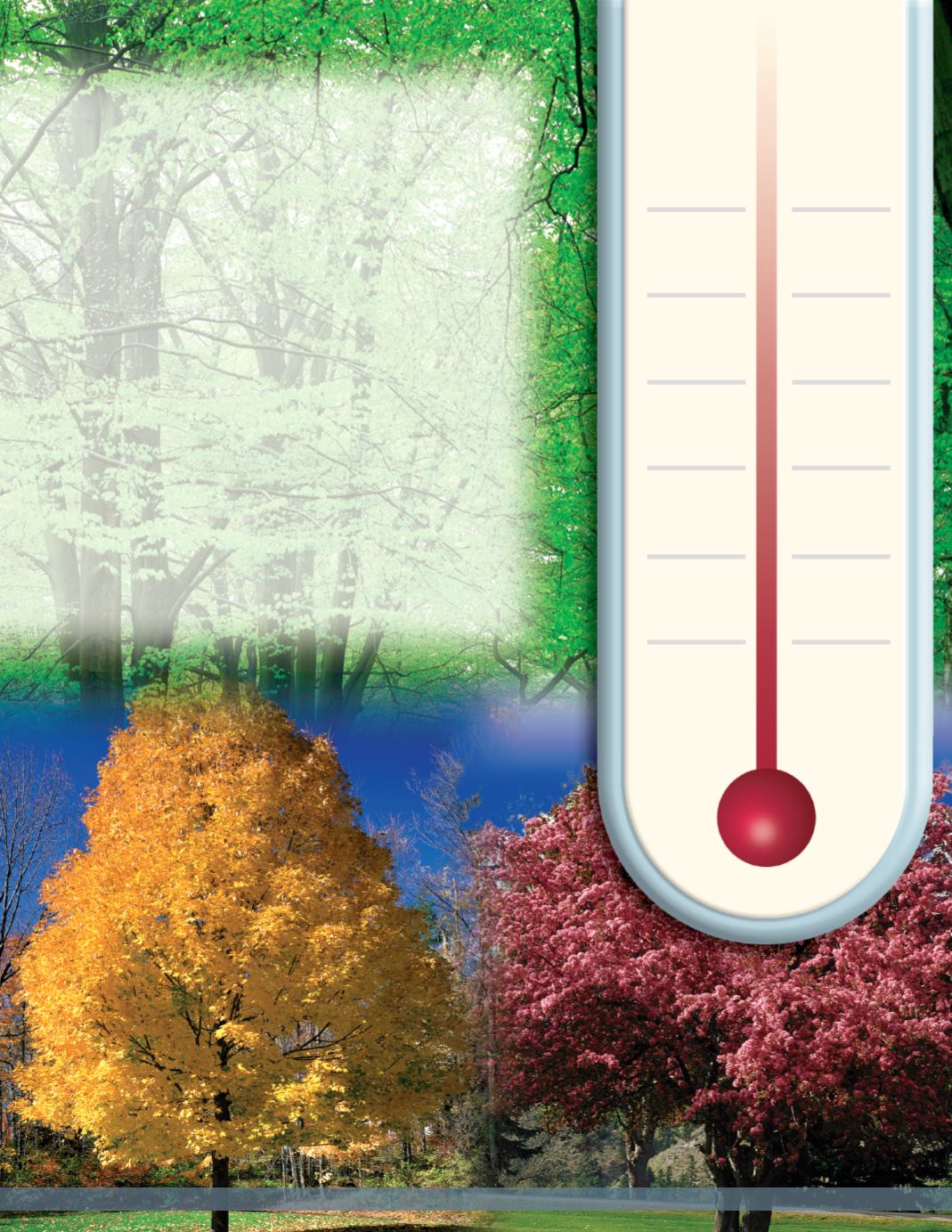
Climate of Pennsylvania
Our state’s climate is described as
humid continental
.
This kind of climate has four different seasons—fall, winter,
spring, and summer. In this type of climate, winters can be
quite cold. Temperatures near or below freezing (32°
Fahrenheit) can arrive at any time during the coldest months
of November throughMarch. On the other hand, summers
are often quite warmand humid.
Although we are located near the Atlantic Ocean, our
climate is not influenced greatly by the ocean. However, we do
receive occasional coastal storms known as
nor’easters
. Our
climate ismore directly affected by the westerly winds and
weather fronts coming from the interior part of our country.
Pennsylvania can be hit with seasonal stormy weather, such
as hurricanes, blizzards, and tornadoes.
Depending upon the location in Pennsylvania, our
precipitation averages between 34 to 52 inches each year.
The southern and eastern parts of Pennsylvania receive
more average precipitation than anywhere else in our state.
The precipitation is distributed evenly throughout the year.
This amount of precipitation is adequate for farming, fishing,
and foresting. In some years, however, our state does not
receivemoisture for a lengthy period of time. When these
conditions occur, it is known as a
drought
.
In the summer, July average temperatures range from
76° Fahrenheit (F) in the southeast to 68° F along Lake Erie.
In the winter, average temperatures in January range from
31° F in the southeast to 24° F along Lake Erie.
Highest Temperature
111
º
F—Phoenixville
July 10, 1936
Lowest Temperature
-42
º
F—Smethport
January 5, 1904
Highest Daily Rainfall
34.5 inches—Smethport
July 17, 1942
Highest Annual Rainfall
81.6 inches—Mt. Pocono
1952
Highest Daily Snowfall
38 inches—Morgantown
March 20, 1958
Highest Annual Snowfall
225 inches—Blue Knob
Winter of 1890-1891
Most Destructive
Weather Event
Hurricane Agnes - 1972
$2 billion—48 deaths
P
ENNSYLVANIA
H
IGHS AND
L
OWS
6
Understanding Pennsylvania


